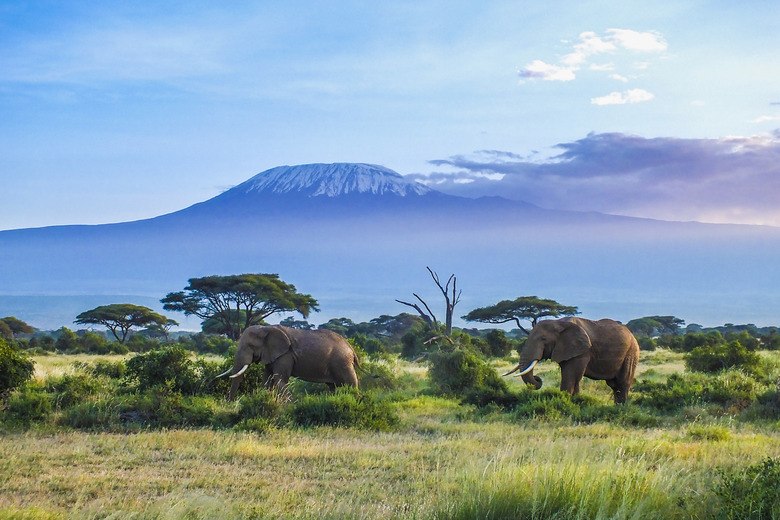Biotic And Abiotic Factors In The Savanna Grassland
A savanna grassland is an ecological system with scattered shrubs and isolated trees. The grasslands are found on both sides of the equator between tropical rainforests and desert biomes and have warm temperatures year round. A grassland savanna has a variety of biotic and abiotic components ranging from simple to highly specialized plants and animals and physical characteristics.
Biotic Components
Biotic Components
The biotic components of a savanna grassland are the living organisms that inhabit the area. These organisms are referred to as producers, consumers or decomposers. Producers use the sun's energy via photosynthesis to absorb nutrients. Trees, grasses, shrubs, mosses and lichens are types of producers found in a savanna grassland. Producers provide energy for many species of organisms such as insects, fungi, and larger animals. Consumers eat plants or animals to obtain energy for growth and reproduction and are divided into three categories: herbivores, omnivores and carnivores. Herbivores eat plants only. Omnivores eat both plants and animals. Carnivores eat animals only. Decomposers break down organic material to obtain nutrients and include the fungi, insects, algae and bacteria.
Abiotic Components
Abiotic Components
The abiotic components of a savanna grassland are the nonliving aspects of the grassland ecosystem that the living organisms depend upon. These include climate, soil, topography and natural disturbances. Precipitation is important to a grassland as it determines the amount and types of plants and trees that grow. The topography of a savanna grassland includes the landscape. The landscape includes hills and prairies, rocks, cliffs, gullies and low-lying areas. The natural disturbances that occur in a savanna grassland include flooding from rivers and streams and fires from lightning storms.
Soil
Soil
Soil has both biotic and abiotic factors in a savanna grassland. The abiotic factors of soil include minerals and texture of the soil that allow for the flow of water. The biotic factors include organic matter, water and air. Plants and trees grow in the soil, and it holds the moisture for them to absorb. In addition, soil provides a habitat for soil organisms, such as worms and ants, as well as microscopic bacteria.
Plants and Animals
Plants and Animals
There are many different species of plants and animals that make up the biotic component of the savanna grassland. Animal depends on each other to keep the savanna grassland ecosystem in equilibrium. Most animals in the grassland savanna are long-legged or have wings in order to migrate. In addition, there are many animals that burrow to avoid heat and protect their young. There are also many predator birds such as hawks due to the wide open plains that provide a clear view of prey. Plants in a savanna grassland are specialized to survive long droughts. These types of plants have long tap roots to reach water, thick bark to protect from fires and trunks to store water.
References
Cite This Article
MLA
Schafer, Dana. "Biotic And Abiotic Factors In The Savanna Grassland" sciencing.com, https://www.sciencing.com/biotic-abiotic-factors-savanna-grassland-10029913/. 23 April 2018.
APA
Schafer, Dana. (2018, April 23). Biotic And Abiotic Factors In The Savanna Grassland. sciencing.com. Retrieved from https://www.sciencing.com/biotic-abiotic-factors-savanna-grassland-10029913/
Chicago
Schafer, Dana. Biotic And Abiotic Factors In The Savanna Grassland last modified March 24, 2022. https://www.sciencing.com/biotic-abiotic-factors-savanna-grassland-10029913/
